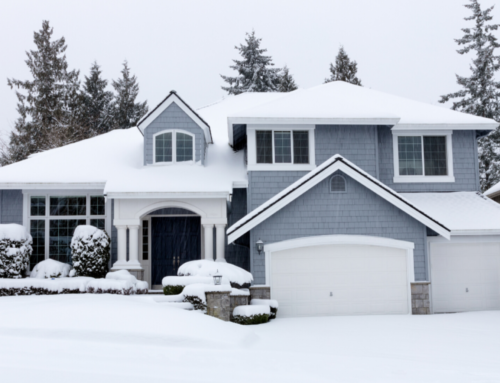Looking at the history of the world and humanity in general, it won’t take too long for one to conclude that regional and global crises trigger mass migrations and movements of populations. People try to get as far from the “hotspots” as possible in order to protect themselves and their families. The COVID-19 pandemic is no exception to this rule. More and more people, both in the United States and abroad, are looking to move away from places where the coronavirus is most widespread. But is it even possible to completely escape this invisible enemy?
The moving patterns of populations during this year’s pandemic can not only tell you a lot about the way people react to crises, but it might also help you predict future real estate trends. Whether you’re in the market for a brand new home for yourself and your family or are looking for reasonable investment opportunities, you stand to benefit from gaining in-depth knowledge of how frequently and why people move homes in any given year, especially when we’re talking about a year as turbulent as 2020.
An unexpected pandemic and the social distancing regulations that ensued have resulted in millions of temporary movers who wanted to endure the lockdown in the vicinity of their family and friends. This shouldn’t come as too much of a surprise. Humans are social creatures, after all, and they flock to their own. However, some of the country and worldwide statistics point towards a different trend: people have started permanently moving to less densely-populated areas of their countries, buying up real estate outside of large cities.
In this article, we’ll take a detailed look at American and global migration patterns in 2020 compared to the previous year. By the end of it, you’ll have a clearer understanding of just how many people moved due to the pandemic, why they’ve decided to move, what were the factors that enabled them to permanently leave social and financial hubs such as New York City or San Francisco, as well as why the coronavirus pandemic might be the perfect opportunity to start investing in real estate!
Have Americans Really Moved More Often in 2020?
In 2020, Americans have moved around a lot, despite the shelter-in-place orders and restrictive measures intended to limit the spread of SARS-CoV-2. According to Google’s community mobility reports, released to aid policymakers in implementing the most effective rules for protecting public health, nearly all types of mobility have decreased, except for one. Residential mobility. In 2020, it has grown by 12% compared to the baseline, which is a whopping statistic, given the fact that people don’t move houses all that often.
Even more fascinating is the fact that residential mobility has increased in all of the 50 American states. This is very important when it comes to the analysis of moving patterns. It points toward people moving homes during COVID-19 as a nationwide trend and can serve as a good starting point for further exploration of how and why people have moved houses in 2020.
It is no secret that the pandemic is the leading factor behind the increased mobility of Americans in 2020. However, COVID-19 itself isn’t what enabled people to leave cities and find new homes in less densely-populated areas. We’ve been through pandemics before, most notably the 2009 H1N1 epidemic, more commonly known as the swine flu pandemic. Contrary to COVID, however, it didn’t spread as rapidly and wasn’t nearly as devastating for the American health care system and the global economy. Therefore, it’s relatively safe to say that it isn’t the disease itself that has affected the population migration patterns, but rather the governments’ approach towards combating the coronavirus and limiting its spread across the globe.
Before we get to the factors that enabled nearly 15.9 million American citizens to move out of their cities over the past several months, we’ll take a look at the data from other countries to see whether or not these mass population migrations are a truly global phenomenon.
What about the Rest of the World?
Google’s reports on mobility during the pandemic does not limit itself to the United States. Comprehensive data on the moving patterns of people’s from nearly every country on the planet can be found there (excluding China and, perhaps unsurprisingly, North Korea), making it one of the best sources for scientists, policymakers, and hobbyist analysts to look at the migration patterns in the last couple of months.
It is important to note that one of the most significant limitations of these reports is that they only consider the last two and a half months, from October to December. As per Google’s explanation, this is because this report’s primary purpose is to help policymakers deal with the pandemic’s second wave and prepare their countries for the third one. Still, its recency makes it a good tool to study the latest trends in mobility.
The data is clear: in the last two months, people from all over the world have continued to move for residential purposes; whether we’re looking at statistics from Canada, Australia, Germany, or Poland, the trends remain the same: residential mobility is on the rise, and it doesn’t seem like it is going away anytime soon.
In various countries, the recent rise in house moves is likely related to the time of the year — after all, Christmas is around the corner, and due to some countries’ policies regarding population movements in the second wave of the pandemic, people are rushing to get away from the cities and to their family homes before more travel restrictions are imposed. With November and December being peak flu season, new coronavirus cases are popping up in numbers as high as tens of thousands per day in some countries, but that still does not prevent people from moving around.
It’s also worth mentioning that in most nations, these “micro-migrations” are being carried out in a somewhat responsible manner. According to Google’s data, even though residential mobility continued to increase into the winter, traffic to and from transit points, such as train stations, airports, or long-distance bus stops, has been decreased. This means that people opt for rather private means of transportation to move between cities.
Where Have People Moved to?
Now that we’ve established that moving houses is on the rise both in the United States of America and the rest of the world, it may be worth it to look at exactly where people migrate. Ever since March and WHO’s announcement that the spread of SARS-CoV-2 can be considered a pandemic, we have experienced an increased number of moves from the cities to the countryside.
According to the Pew Research Center, 22% of Americans have ‘either relocated due to the pandemic or know someone who has.’ This makes for roughly one-in-five people in all of the United States. It is quite a whopping statistic already, and, likely, this trend won’t stop there. But where have all these people gone?
The answer is quite simple: to the countryside. This year, major American cities and financial hubs have experienced a mass exodus. It shouldn’t surprise anyone — there’s more space in the country, and real estate is much cheaper. For the price of a one-bedroom apartment in San Francisco to Washington D. C., you might be able to buy a large home with a sprawling garden in Wyoming, Colorado, Texas, or one of the other central states.
These migration trends make a lot of sense from an epidemiological perspective. Some estimates claim that as much as 90% of all COVID cases in the United States are concentrated in urban areas. This means that living in New York City or San Francisco, you’re nearly ten times more likely to come in contact with the disease than when staying in rural Pennsylvania or upstate New York.
It is logical and understandable that people move homes in fear of the coronavirus. But is that the only motivation behind those moves? After all, life goes on regardless of the current epidemiological situation, and there are plenty of things tying people down to their cities. So what exactly has changed between March and July 2020, compared to the same period in 2019?
Migration-Enabling Factors
A dangerous virus itself is not enough to motivate millions of people to move to the countryside. These mass migrations have not been commonplace in 2009 during the swine flu pandemic or other epidemics of the 21st century. This coronavirus pandemic is fundamentally different, though. In this section, we’ll explore the main reasons why people were able to abandon cities for the sake of country living.
Remote Work
Although instances of it have been around for a couple of years now, work from home has become synonymous with the ongoing pandemic and has fundamentally changed the way we look at our daily routines, professions, and office work in general. All of a sudden, no one had to show up on the 15th floor of a New York City skyscraper to sit in front of a computer for eight hours straight. The exact same amount of work could get done from one’s family’s ranch in Wyoming in the same time frame.
Social distancing measures have forced corporations, entrepreneurs, and office managers worldwide to move their office-based employees to remote work mode. This, in turn, has led to the rise of popularity of software and platforms meant to streamline communications between remote teams, such as Zoom, Slack, TeamViewer, or Google Drive. Partially thanks to these modern solutions, and partly because of the reduced stress levels of employees who didn’t have to spend long hours commuting to and from work during rush hours, most office workers’ productivity has increased.
With the realization that when working from home, people can get just as much stuff done as they would in the office, some experts go as far as claiming that remote work is here to stay. Many offices have already announced that returning to “office mode” will be purely voluntary. The “home office” option has allowed plenty of flexibility in terms of where people can live. Without the need to show up at the office every day, many Americans have moved to the countryside, oftentimes to another state altogether.
Cheaper Housing (for Now)
Prior to 2020, property prices in the countryside were much, much lower than in the cities. Combine that with a global pandemic that has eradicated most people’s ties to their apartments in the city, and you’ve got a mass exodus in the making. If you owned a small apartment in San Francisco or New York City, selling it might have made you enough cash to buy a sizable house in rural Texas and even leave you with some money to renovate it!
Beware, though. A lot of real estate experts claim that these home-buying trends may bring about a huge change in the markets. With time, property prices in the countryside may hike up and become higher than in the cities, leading to a decrease in urban real estate value.
Isolation Made Easier
If you think that social distancing is difficult, try imagining having to stay home for 95% of your time while living in a tiny one-bedroom apartment. For many people, this became the most unbearable part of the whole COVID-19 pandemic and has led them to move out of places like New York City. In fact, the majority of people have moved due to deteriorating mental health states because of being cramped up in tiny apartments.
It’s the Economy, Stupid!
Finally, one of the prevailing reasons behind people moving out of cities and back to their parents’ homes or choosing to rent places in smaller towns and villages is simply due to the economic crisis, the effects of which people have started experiencing as early as July 2020.
The closing down of shops, restaurants, and various entertainment venues has led to the laying off of millions of workers across the country. According to a Pew Social Trends study, 25% of American adults have been fired or know someone who has been laid off because of COVID.
Furthermore, half of those who lost their jobs are still struggling to find new means of generating income. Unemployed and without many opportunities in the major cities, people simply couldn’t afford to rent expensive downtown apartments anymore, further contributing to the moving trends in the US and abroad.
The Bottom Line
All of the data and anecdotal evidence analyzed in this article point towards one, clear-cut conclusion regarding the moving patterns of human populations during the coronavirus pandemic. Enabled by the possibility of working from home, deprived of space, and pushed to make the move because of economic factors, people have started leaving big cities, the likes of New York City or San Francisco, and choosing to live in the more rural areas of the country instead.
What does this mean for the real estate market? The most important thing to remember is that, compared to the previous year, the value of property in major cities will significantly decrease. It presents a unique opportunity for investors as 2021 rolls around — even though many have moved away from them, cities are bound to make a comeback in one way or another. As humans, we flock to these large social and financial hubs because they’re exciting, mysterious, and overall irresistible. Even if work from home does become the new normal, the hunger for “big city life” will remain.
This provides the opportunity for many to invest in urban commercial real estate and reap the profits as soon as the coronavirus threat becomes a thing of the past.
You can sell a house in any neighborhood quickly and easily with Highest Cash Offer!
We buy houses in any condition anywhere in the United States FAST! It’s as simple as click, offer, close, and we’ll get you the cash you need for you home, mobile home or commercial property! There are no agents to hire, no fees to pay, no showings to schedule and no repairs to make!
To receive a FREE, NO OBLIGATION cash offer on your home, call (888) 387-5750 or click the button below!







